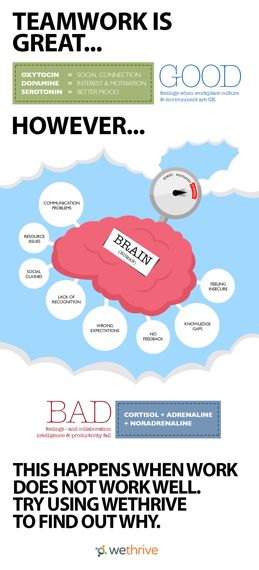The HR world is awash with buzzwords and hot topics - search Google for wellbeing at work and you get 58 million results! Here's this week's hot list:
- Wellbeing
- Mental health
- Employee engagement
- Resilience
- Job satisfaction
Whole industries have spawned off each of these, serving the needs of HR directors desperately trying to attract, retain and develop their people. Countless products (ourselves included), services and consultants are there to offer expertise and support.
But here's the thing... as savvy people are starting to twig, all the words in that list are talking about the very same thing: (drum roll) how do your people feel, and what is their state of mind.
This infographic explains why (click it to see a full size version).

The words used to describe this come and go - usually losing favour before anyone can show how to make them work usefully in practice. But these words are just pointers to something inside us - the mixture of neuronal and hormonal activity that make us behave and feel as we do.
The brain isn't a single thing, but a collection of structures from different periods in our past, and these behave quite differently. You could say that each of us contains a thinker, a chimpanzee and a snake, and how we behave at any moment depends on which of these is in charge.
All kinds of things can tip the balance of power between them, but the headline is that as stress increases, so progressively older brains take over. In extreme situations, when there is a real threat, the fight-or-flight reflex kicks in and all thinking stops.
This means you need the stresses on your people to be under control; calmer people have more access to the parts of the brain that are intelligent, collaborative and imaginative, but as stress increases we become more individualistic, build silos and fall back on old routines.
This doesn't mean we can't be excited about work - in fact we have to be, a bit, for it to feel meaningful. There just comes a point where it's too much, and then we start to feel bad.
How does this happen? The brain is partly an electrical system, with synapses connecting cells together. But there is another communication system that flows through the brain and body, in the form of hormones.
You can experience this for yourself very easily, just by thinking back to the best job you ever had. Think about what it was like, then recall the feelings associated with having a really good time and getting things done.
Try it: think about the people you were with in your best work ever, the mission you were on, and the way you were recognised for your contribution. How did it feel to go home feeling you had achieved things, and to go back next day looking forward to the challenges? Close your eyes if you like, and immerse yourself in that set of feelings for a few moments.
As you think back to that time you will probably feel a warm feeling around your body. That's the magic - recalling the memory brings up the related hormones. Dopamine gets you excited about doing things, oxytocin (the hug hormone) recalls the positive social environment with good working relationships, and serotonin raises your mood as you recall positive experiences. It feels good, doesn't it?
The flip side is quite different. When working life is horrible the result is a destructive cocktail of stress hormones like adrenaline and cortisol. These help shift the balance of power towards the older, reptilian brain, with its aggression and territorialism, and at the same time they raise blood pressure and compromise the immune system - bad news all round.
From the organisation's point of view there is yet more bad news - people in this state of mind and body are less intelligent, creative and collaborative...
So, if you want good mental health, wellbeing, engagement, resilience, job satisfaction and productivity in your people, the challenge is simple: create a culture and environment where they feel like they are in the best job they ever had!
How do you do that in practice? WeThrive is a pretty good start, because it shows you the gaps between that ideal state and what your staff are experiencing right now. It also tells you what to do to sort the problems out, in plain language.
So, if you want to step into the brave new world of neuroscience, but without the psychobabble try WeThrive for free and start to improve wellbeing at work for your organisation.